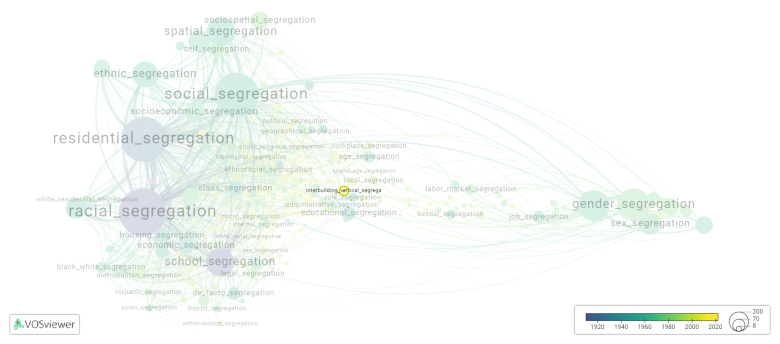Interbuilding vertical segregation
Date and country of first publication[1]
2017
United Kingdom
Definition
Interbuilding vertical segregation refers to the separation of different social or economic classes within a single building or complex. This can manifest in various ways, such as having separate entrances or amenities for residents of different income levels, or physically separating affordable housing units from higher-end units within a building. This practice reinforces social inequalities and can contribute to the marginalization of certain groups within a community.
See also
Related segregation forms
Interbuilding vertical segregation is frequently discussed in the literature with the following segregation forms:
residential segregation, vertical segregation

Visualization based on the research
For the complete network of associated segregation forms, see:
- First year of publication https://tinyurl.com/2235lkhw
- Louvain clusters https://tinyurl.com/2d8wg5n3
- Betweenness centrality https://tinyurl.com/223udk5r
- Disciplines where segregation forms first appeared https://tinyurl.com/244d8unz
References
Notes
- ↑ Date and country of first publication as informed by the Scopus database (December 2023).
At its current state, this definition has been generated by a Large Language Model (LLM) so far without review by an independent researcher or a member of the curating team of segregation experts that keep the Segregation Wiki online. While we strive for accuracy, we cannot guarantee its reliability, completeness and timeliness. Please use this content with caution and verify information as needed. Also, feel free to improve on the definition as you see fit, including the use of references and other informational resources. We value your input in enhancing the quality and accuracy of the definitions of segregation forms collectively offered in the Segregation Wiki ©.
Interbuilding vertical segregation appears in the following literature
Flint S. (2017). Residential choices as a driving force to vertical segregation in whitechapel. Lecture Notes in Geoinformation and Cartography, 39-57. Kluwer Academic Publishers.https://doi.org/10.1007/978-3-319-56759-4_3
